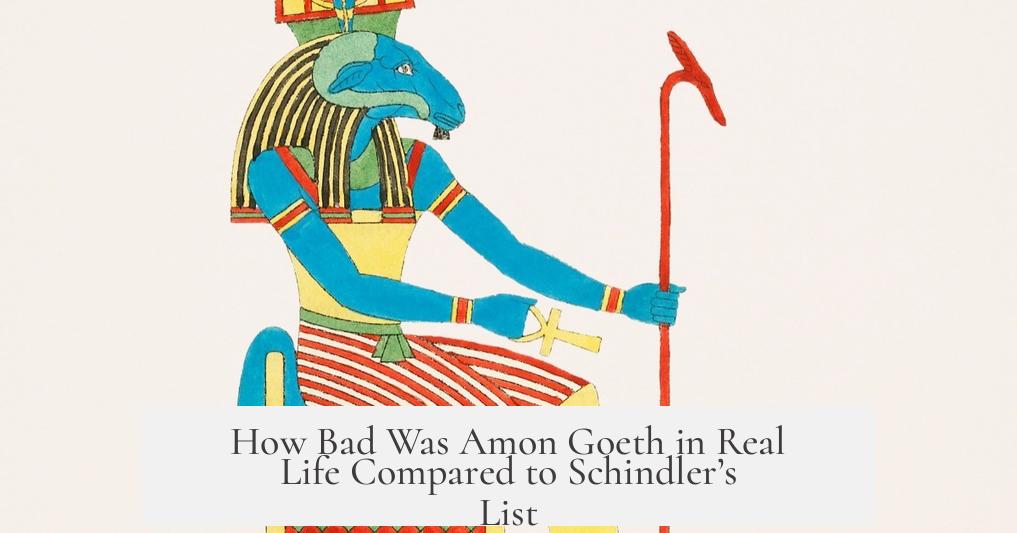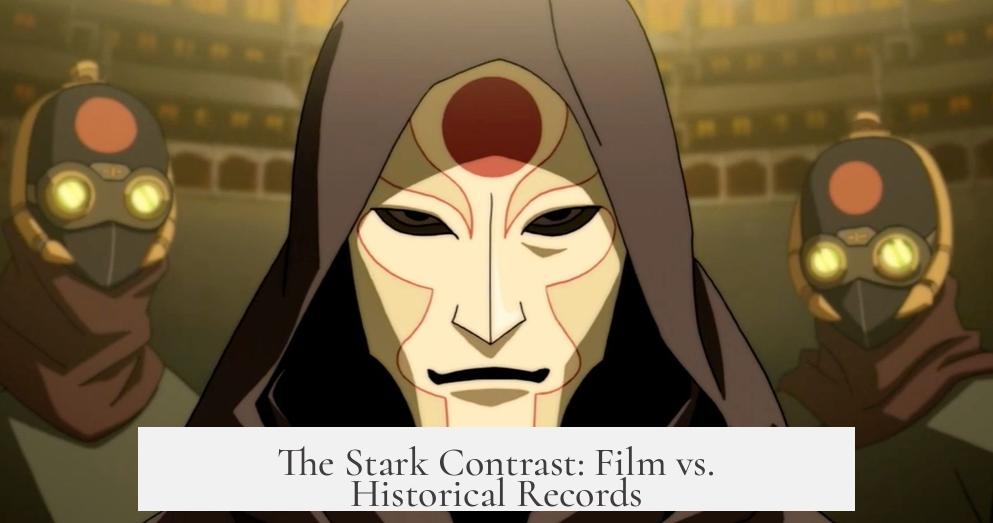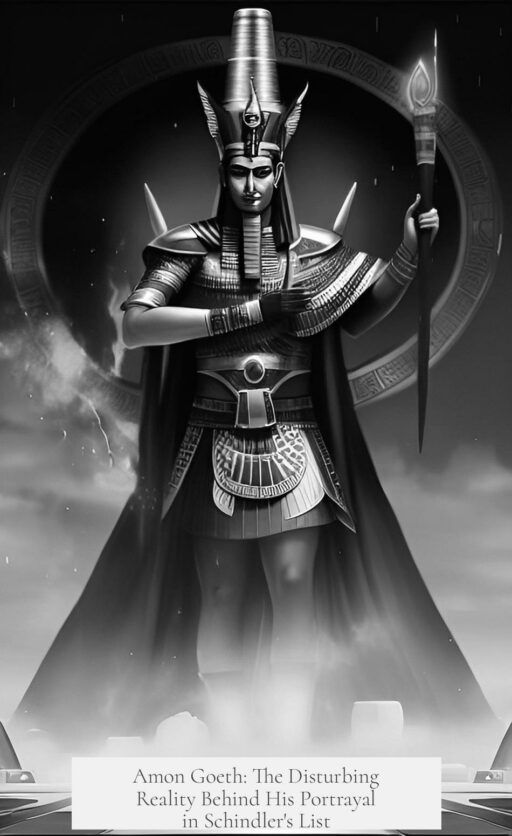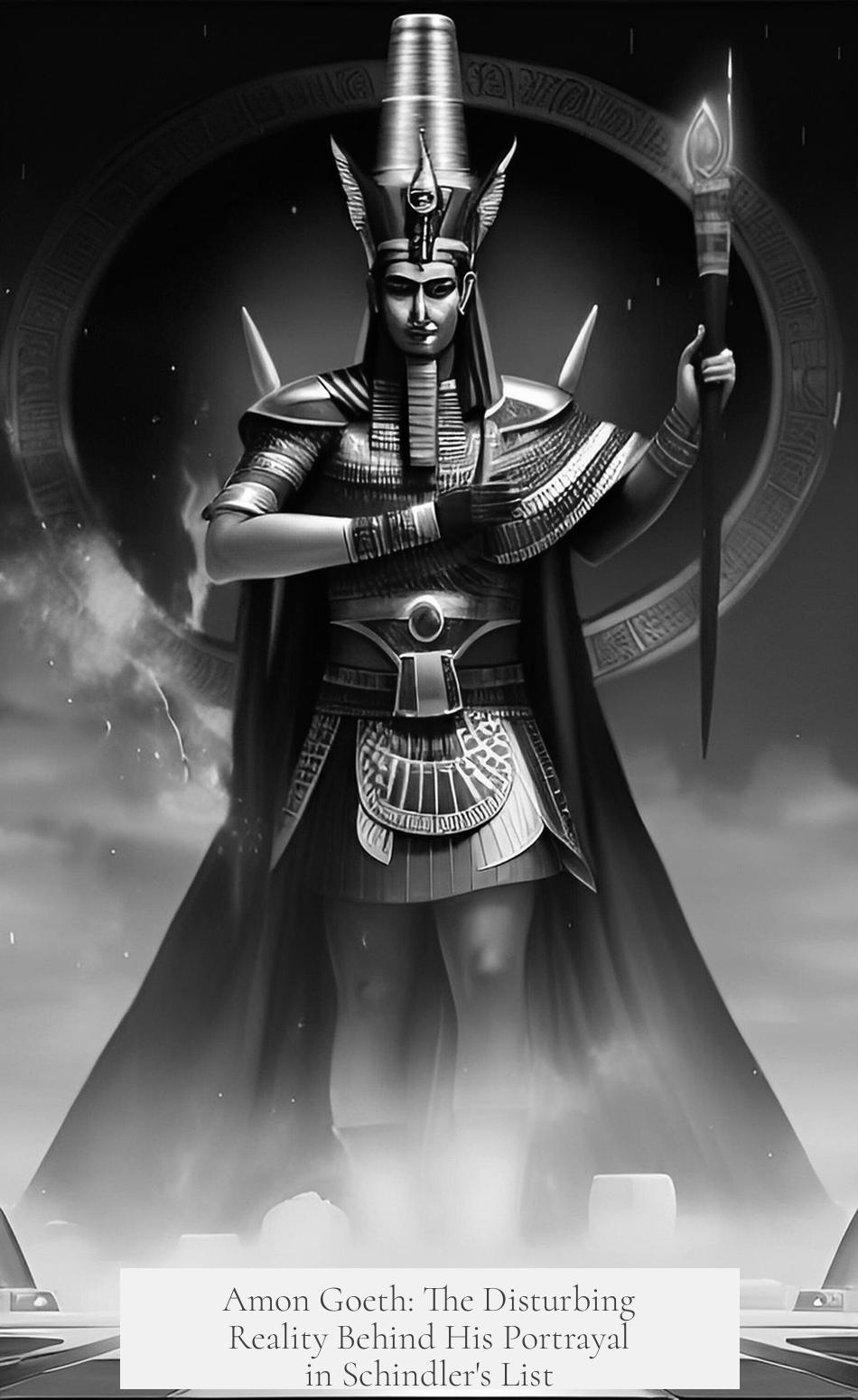Amon Goeth was far worse in real life than the depiction in Schindler’s List. The film portrays him with some emotional complexity and serves as a dark counterpoint to Oskar Schindler’s character. However, historical records show Goeth as an exceptionally brutal, sadistic, and arbitrary killer whose horrific actions went beyond the film’s portrayal.
In Schindler’s List, Goeth’s character is humanized to enhance the narrative. He expresses twisted emotions, particularly in scenes involving Helen, providing a contrast to Schindler’s transformation from opportunist to savior. The film portrays Goeth as a man capable of malice, yet still human, allowing audiences to view him as a flawed individual rather than a mythic monster. This artistic choice underlines a central theme: Nazis committed evil through conscious decisions, just as Schindler chose to save lives.
The film also softens Goeth to some extent to create parallels with Schindler. Their interactions show moments of normalcy and even camaraderie, underlining the thin line between good and evil. For example, Schindler’s sarcastic remark calling Goeth “a wonderful crook” accentuates how the war brought out worst traits in men like Goeth. Still, these scenes omit the full scale of Goeth’s savagery.
Historically, Goeth’s cruelty was extreme and overt. As the commandant of the Plaszow concentration camp and during the liquidation of the Tarnow ghetto, he actively executed women, children, and adults with brutal efficiency. Trial records describe him shooting between 30 and 90 women and children himself during the 1943 liquidation. He sent about 10,000 Jews to Auschwitz by rail under lethal conditions, where only 400 survived the transport.
Goeth’s terror was not limited to mass executions. He personally engaged in psychological torture and sadistic misconduct. He frequently unleashed his bloodhounds on prisoners without cause, resulting in horrific injuries or death. Survivors recount arbitrary shootings—for instance, Goeth allegedly shot a man for being too tall. Another grim incident involved him forcing a sick boy to eat his own feces before shooting him. These are examples of cruelty with no rational motive, reflecting pure sadism.
In his opening address to prisoners, Goeth declared, “I am your god,” demonstrating how he exerted absolute power and dehumanized those under his control. This arrogance fueled indiscriminate violence and fear, breaking prisoners’ spirits beyond physical harm.
Ralph Fiennes, who portrayed Goeth, aimed to capture the “banality of evil” — the ordinary mindset that allowed such atrocities. He insisted on showing Goeth as a living man caught in everyday compromise and rationalizations, not merely a monstrous caricature. This approach conveyed how cruelty can arise from mundane choices, but it necessarily softened the extent of Goeth’s atrocities to fit narrative structure and audience comprehension.
Moreover, the film simplistically sanitizes both men to craft a moral story. It spares Schindler the complexity of his pre-war work with the Abwehr, even though those connections helped save many lives. Meanwhile, Goeth’s true homicidal nature is toned down so that viewers can glimpse some humanity. In reality, Goeth was a remorseless killer whose crimes defy comparability with Schindler’s.
Key takeaways:
- Goeth was an extremely brutal, sadistic camp commandant responsible for mass executions and psychological terror far worse than shown in the film.
- The film humanizes Goeth for narrative contrast, showing him with emotions and moments of normalcy.
- Goeth personally killed many victims arbitrarily and unleashed dogs on prisoners, exhibiting pure cruelty without rational justification.
- He arrogantly declared himself “god” over prisoners, symbolizing total dehumanization and control.
- The actor Ralph Fiennes portrayed Goeth’s “banality of evil,” but this softened Goeth’s monstrous reality for storytelling purposes.
- Historical records highlight Goeth’s crimes as far exceeding the film’s depiction, emphasizing his ruthless nature.
How Bad Was Amon Goeth in Real Life Compared to Schindler’s List?

Amon Goeth was far worse in reality than the already chilling version portrayed in Schindler’s List. The film humanizes him to some extent, giving viewers a glimpse into his twisted emotions and creating a narrative foil to Oskar Schindler. But real history paints an even darker portrait of Goeth’s brutality and cruelty — one that’s horrifyingly unfiltered and utterly merciless.
So, how exactly was this sadistic figure worse than you might have seen on screen? Let’s unpack the layers behind the man who didn’t just inflict terror but reveled in it.
The Artistic Spin in Schindler’s List: Why Goeth Was Humanized
The film’s director needed a villain who could stand as a “dark mirror” to Schindler. It wasn’t enough to show Nazis as mere monsters; they had to appear as humans who made conscious, evil choices. This nuanced portrayal aims to make audiences confront the uncomfortable truth that evil often wears a human face.
In the movie, Goeth is shown with emotions — twisted, disturbing ones, but real feelings nonetheless. Scenes featuring his relationship with Helen, for instance, hint at a complexity beyond pure villainy. It’s a clever storytelling move. Could a monster love? The film nudges us to think so, albeit in a deeply perverse way.
Furthermore, the movie contrasts Goeth’s ruthless side with Schindler’s gradual shift from a passive profiteer to an active rescuer. When Schindler calls Goeth “a wonderful crook” whose true nature surfaces under wartime stress, it highlights a clash of ideologies through personal behavior. These layers make for gripping cinema but soften the harsh reality of actual events.
The Horrific Reality of Amon Goeth’s Brutality
Now, brace yourself. The real Amon Goeth’s actions during World War II shock even the most hardened historians. According to trial records by the Supreme National Tribunal of Poland, during the liquidation of the Tarnow ghetto, Goeth personally shot between thirty and ninety women and children. He orchestrated the transport of approximately 10,000 Jews to Auschwitz, where only 400 arrived alive.
That’s not just evil; it’s systematic slaughter. Imagine overseeing death on such a scale and doing so with casual cruelty.
Upon arriving as the commandant of the Plaszow labor camp, Goeth was bluntly terrifying. He declared to prisoners, “I am your god.” This chilling pronouncement perfectly illustrates his complete dehumanization of those under his control. He wielded absolute power with terrifying arbitrariness and sadism.
One survivor’s testimony captures the animalistic cruelty Goeth unleashed: he let his bloodhounds maul prisoners — ripping off limbs for no reason. Another account recalls him shooting a man in the head simply because he was “too tall.”
And, perhaps most gruesome of all, Goeth forced a sick young boy suffering from diarrhea to eat the mess, only to shoot him afterward. The depth of his cruelty defies comprehension and starkly contrasts with the twisted but somewhat controlled cruelty portrayed in film.
Portraying Goeth: The Actor’s Challenge to Capture Evil’s Banality
Ralph Fiennes, who portrayed Goeth in Schindler’s List, sheds light on why the character needed depth beyond pure villainy. He explains that “evil” is often wrapped in everydayness — the banal, dull routine of everyday life that somehow allows horrific acts to happen.
He points out Goeth’s human motivations: a job to do, a twisted ideology to uphold, inch-by-inch moral compromises. This banality makes Goeth’s evil more terrifying because it wasn’t some supernatural evil — it was an ordinary man slammed into horrific extremes by warped choices.
That very human ordinariness made him unpredictable and dangerous, but still, the portrayals softened the full extent of his savagery for storytelling. Fiennes’ performance walked the tightrope between showing a monster and a man, but reality leaned heavily toward monstrous.
The Stark Contrast: Film vs. Historical Records

Interestingly, the film also softens Schindler’s flawed past to make his redemption story more straightforward. His pre-war connections with the Abwehr, which actually helped him save lives later, are glossed over. The focus was on moral choices rather than messy realities.
Similarly, Goeth’s almost unimaginable homicidal actions are toned down in the movie. A brutally honest portrayal of all his crimes would shatter any narrative symmetry with Schindler’s humane transformation. The historical Goeth was so monstrous that even comparing him to Schindler risks trivializing his atrocities.
Understanding the Depth of Goeth’s Atrocity: Why It Matters
Why bother dissecting these differences? Because understanding the brutal truth about Goeth forces us to confront how ordinary people can commit unspeakable evils. It challenges any romantic or simplified view of history.
It also reminds us that artistic narratives, while powerful, have limitations. They must balance engagement with truth. In Goeth’s case, that meant sacrificing some factual horror for a more relatable villain — which, in hindsight, might soften the ultimate lessons the real story can teach.
Maybe we should ask: How do we honor victims properly if we don’t face the raw reality? How do we prevent such cruelty if we view history through rose-tinted glasses?
In Conclusion: Goeth Was Worse — Much Worse
- Schindler’s List humanizes Goeth to build narrative contrast. He appears twisted but emotional, a flawed man rather than a pure monster.
- Historical records reveal Goeth as a merciless killer and sadist, personally executing innocents, orchestrating deadly transports, and inflicting arbitrary violence.
- His declaration, “I am your god,” and the use of brutal bloodhounds highlight his terrifying absolute power over life and death.
- Actor Ralph Fiennes stresses the banality of evil behind Goeth’s facade, emphasizing everyday human decisions that lead to monstrous acts.
- The film’s softened portrayal cannot capture the scale of Goeth’s atrocities — the true horror of his actions is far beyond the movie’s scope.
In reality, Goeth was not just a cold-blooded psychopath portrayed on screen but an unrelenting force of sadism and terror. It’s a grim reminder that some evils refuse softening and demand to be faced head-on.
How was Amon Goeth’s cruelty different in real life compared to the film Schindler’s List?
In reality, Goeth personally shot many women and children and caused thousands to die during brutal transports. The film shows him with emotions, but real Goeth was more sadistic and arbitrary in his violence, such as ordering attacks by bloodhounds without reason.
What kinds of terrible acts did Amon Goeth commit at the Plaszow camp?
Goeth declared himself “your god” to prisoners and regularly killed people for trivial reasons. He forced a sick boy to eat his own diarrhea before shooting him and shot others simply for being too tall. His cruelty was random and extreme.
Why did the film soften Amon Goeth’s character?
The film depicted Goeth with some human emotions to create a dark mirror to Schindler’s character. This made the story more dramatic and complex, showing the Nazis as humans who chose evil rather than monsters without feeling.
Did Ralph Fiennes think Amon Goeth was portrayed accurately?
Fiennes said his role was to show Goeth as a human being with everyday struggles, not just a pure monster. He highlighted the banality of evil—how terrible acts can come from ordinary people making small choices day by day.
Is the real Amon Goeth more brutal than shown in the film?
Yes. Historical records show Goeth’s brutality far exceeded his movie portrayal. He was responsible for many murders and cruelty that the film could not fully show without losing the narrative’s balance with Schindler’s story.



